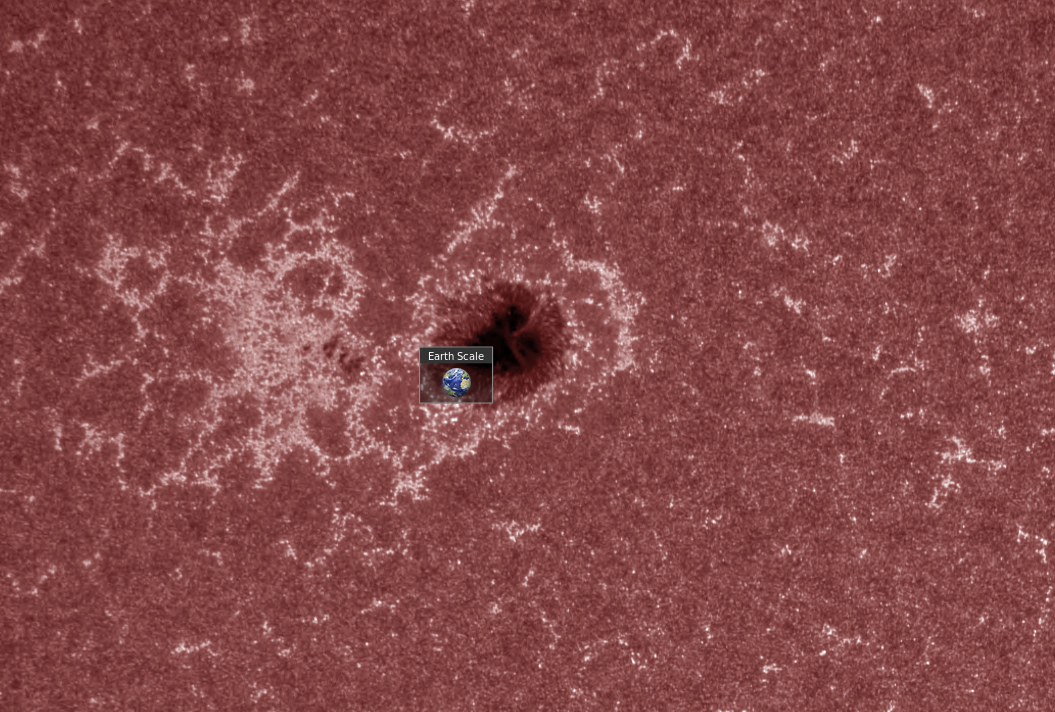The sun has been very quiet over the past month, but a massive sunspot has formed that is several times the size of Earth.

This sunspot group — designated 2529 — more than doubled in size over the weekend. It is so big that people have been photographing it. (Remember never to look directly at the sun!)
The last time we had such a large sunspot was in November 2014.
READ MORE: WATCH: Jupiter-sized sunspot turns to Earth
Sunspots are relatively cooler areas in the region of the sun called the photosphere. This region is about 5,800 Kelvin, whereas the sunspot will have a temperature closer to about 3,800 K. And don’t be fooled: though they look black, they’re actually quite bright. The only reason we perceive them to be darker is due to the brighter region surrounding them.
Typically sunspots appear more often during solar maximums, a period of high solar activity, which happen every 11 years. However, we are currently in a solar minimum, which makes this one very interesting.
Sunspots are formed by strong magnetic field lines rising up from within the sun. They’re not completely understood. However, what is known is that they often produce solar flares. And solar flares can often lead to coronal mass ejections (CME). These fast-moving particles travel along the solar wind and, when they reach Earth, interact with our magnetic field, producing the northern lights.
It just so happens that a minor CME, as well as a coronal hole in the sun’s corona, is sending a stream of particles towards Earth. And due to that, the Space Weather Prediction Center has issued a minor geomagnetic storm warning. If the skies are dark in the part of Canada where you live, you could see the northern lights Tuesday night.
- Ontario First Nation declares state of emergency amid skyrocketing benzene levels
- Nearly 200 fossil fuel, chemical lobbyists to join plastic treaty talks in Ottawa
- Do Canadians have an appetite for electric vehicles? Experts are divided
- Singh mulls TikTok return as U.S. nears potential ban over security fears





Comments